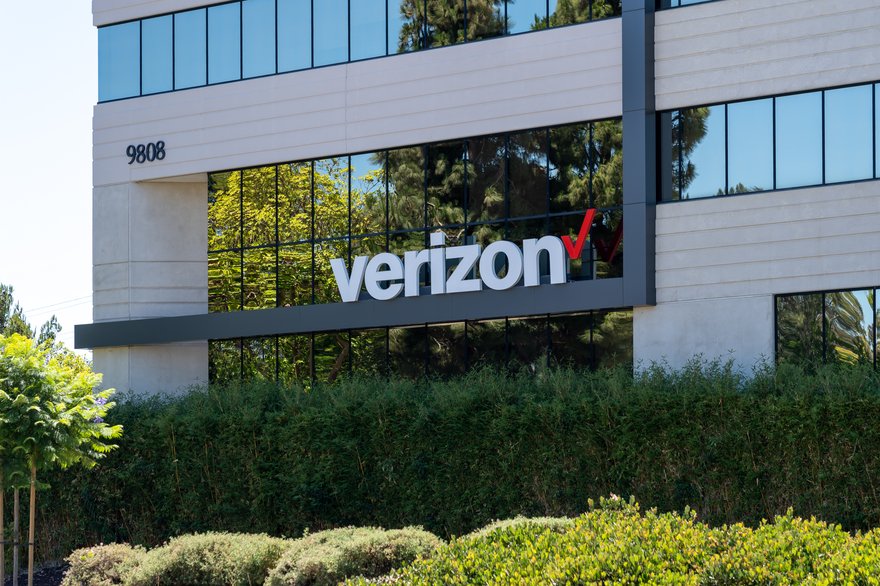Verizon CEO Hans Vestberg downplayed any direct financial impact the current tariff fight might have on the carrier’s operations, but in admitting to the overall uncertainty of that environment Vestberg also noted that when it comes to any impact on devices, consumers would ultimately pay the price.
“I don’t think anyone is relaxed on tariffs given the feeling on where tariffs are going,” Vestberg responded, when questioned on his “pretty relaxed” demeanor on the topic, before adding that only a “very small portion” of the carrier’s roughly $18 billion in 2025 capex “is exposed.”
“We are a U.S. based company investing in the U.S.,” Vestberg said during the carrier’s most recent earnings call. “Fiber is U.S. centric. Everything we do with labor, product, is fiber based, wireless equipment. Of course, we're importing, but … a smaller portion of the total [$18 billion}. That's why I'm saying that this we're going to handle. We have handled it before with our suppliers, strategic suppliers, and I don't see that we will not handle this time.”
That sentiment could be mixed news to those “strategic suppliers,” which have expressed concerns over potential tariff-fueled headwinds.
“The current macro-economic turmoil and tariffs are impacting our industry, and we will not be immune,” Ericsson CEO Börje Ekholm said during the vendor’s latest earnings call. “We’ve taken actions over the many years to actually build resilience into our supply chain, including how and where we develop and manufacture our products, so our focus remains on controlling what we actually can control, including, of course, pricing and spending and the actions we’ve taken.”
Vestberg further referenced recent history in noting that Verizon was able to withstand pandemic-related supply chain issues. “We had no impact at all with the supply chain issues there were because I think my team is the best in the industry to handle that,” Vestberg said.
Some analysts have noted that operators might feel a tariff-related pinch.
“Given the small number of vendors in the market, we don’t expect operators to benefit from switching to new hardware suppliers,” Sam Barker, VP of telecom market research at Juniper Research, noted in a recent report. “Huawei, Ericsson, Nokia, ZTE, and Samsung account for more than 90% of the global market share. Operators have already been banned from using Huawei and ZTE equipment in various regions, and local players often lack the production capacity to meet demand. As a result, operators have little choice but to bear the cost of these tariffs.”
Vestberg was more pointed in stating device-related tariff impacts would fall directly on consumers.
“In general, if the tariff is going to be high on the handsets, we're not planning to cover that in our work, that's just not going to be possible,” Vestberg said. “We will continue to be with financial discipline in whatever promotions we have, but we will not cover any enormous increase on tariffs, on handsets, that's ultimately going to hit the consumer in the market.”
That impact could prove painful for Verizon as the carrier reported a loss of 289,000 postpaid handset customers during the quarter, which was more than double the number it lost the previous year.
Verizon continues broadband advances
Despite the handset challenges, Verizon continues to see robust growth in its broadband offerings.
The carrier added 339,000 broadband connections in Q1, led by 308,000 net additions for its fixed-wireless access (FWA) service. That customer base surpassed 4.8 million total connections and remains on pace to hit a company prescribed 8 million to 9 million total connections by 2028.
Verizon is also planning to expand its multidwelling unit (MDU) service. That service taps into Verizon’s extensive millimeter-wave (mmWave) spectrum portfolio to provide broadband services into densely populated locations.
Vestberg said that offering is now live in parts of 50 markets and “we’ll start ramping during the year.”
Verizon’s management had previously explained that the MDU service would also help the carrier better penetrate the lucrative enterprise connectivity space.
“A lot of these MDUs also have stores or businesses in them, and so we’ll be able to leverage that investment as well to increase our market share in this area,” Kyle Malady, EVP and CEO of Verizon’s Business Group, said during an earnings call last year.
Verizon also remains on track to close its $20 billion Frontier Communications acquisition in early 2026. That deal will include Frontier’s fiber networking business, which includes 7.2 million fiber locations that serve 2.2 million subscribers across 25 states.
Those assets will join Verizon’s approximately 7.4 million fiber connections across nine states and Washington, D.C., and when combined will provide Verizon with approximately 10 million fiber customers across 31 states and Washington D.C., with fiber networks passing more than 25 million premises.
Verizon has noted that the acquisition will boost its ability to serve its intelligent edge network in support of artificial intelligence (AI) and IoT use cases. Vestberg, who has been a long-time proponent of the operator being in a strong position to power edge computing services, continues to pump up that potential despite a lack so far of a significant return.
“Our portfolio of high-performance spectrum, the capacity of our fiber, and our ability to deploy and support mobile edge compute make us as the backbone of the AI economy and the partner of choice for players in the space,” Vestberg said during an earnings call last year. “We will power the best AI services for our customers. What sets us apart with AI is our network’s mobile edge computing capabilities and deep fiber footprint. By processing data closer to the source we enable real-time AI application that requires security, ultra-low latency, and high bandwidth. This is where our network shines, opening up possibilities that simply weren’t feasible before.”

